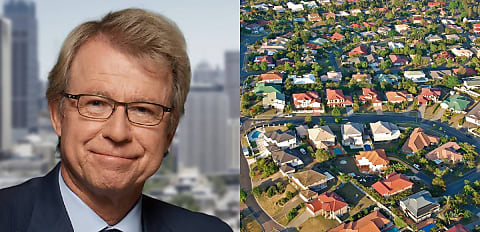Average property prices are expected to fall further into second half 2023 as rate hikes continue to flow through and economic conditions deteriorate, according to a major bank economist.
Citing the latest Corelogic home price data, AMP chief economist Shane Oliver made the grim assessment, explaining that the bank continues to expect average property prices to have a top to bottom fall of 15 to 20 per cent.
“The full impact of variable rate hikes has yet to be fully felt as it takes 2-3 months for RBA hikes to show up in actual mortgage payments,” Mr Oliver warned.
“We are expecting another 0.25 per cent hike this month [December] with the risk of another 0.25 per cent in February and the money market is still expecting the cash rate to be raised to near 4 per cent (from 2.85 per cent currently).
“Two thirds of the 40 per cent of households with a mortgage on fixed rates will see their mortgage rate reset from around 2 per cent to around 5 or 6 per cent by the end of next year,” he outlined.
“This is likely to result in a sharp rise in mortgage stress – this is the so called ‘fixed mortgage rate cliff’,” Mr Oliver stated.
In overview of various domestic and global influences, the major bank chief economist explained that it projected economic conditions are set to deteriorate next year as weaker global growth and rate hikes slow the economy and push up unemployment.
“The combination will result in a further weakening in demand and a potential increase in supply as some financially stressed homeowners sell,” Mr Oliver stated.
Referring to RBA, Corelogic and AMP source data and referencing Deutche Bank analysis, in terms of the ‘stressed homeowners’ Mr Oliver looked at actual home prices compared to an estimate of what a buyer - with a 20 per cent deposit, average full time earnings and mortgage payments assessed at 28 per cent of their income – can afford to pay for a home. H He explained: “The shift in mortgage rates from 17 per cent in 1989 to record lows in 2020 around 2-3 per cent was the main enabler of the surge in home prices and price to income ratios.”
“In other words, record low mortgage rates were reflected in record high home prices.
“While it can be seen … that there are deviations and there are lots of other factors impacting home prices (supply, immigration, household size, taxation, help from “mum and dad”, home size and quality, and government incentives), over time home prices are tied to what people can afford to pay.
“But since April the amount an average new buyer can afford to pay has dropped by roughly 25 per cent from around $600,000 to around $450,000. “This demand side impact has been the key driver of home price falls so far, but suggests there is much more to go,” he highlighted.
Affordability at its worst
Interestingly, Mr Oliver additionally pointed out that while home prices have fallen 7 per cent or so from their recent high, the time taken to save for a 20 per cent deposit remains almost double what it was in the mid-1990s.
“The combination of the surge in interest rates and still sky-high home prices relative to incomes, which necessitate very high debt levels, means affordability is almost as bad as it’s ever been,” he explained.
“This assumes that the buyer saves 15 per cent of their income each year.
“In terms of financial stress, with the 2.85 per cent cash rate household interest payments as a share of income are already estimated to be at a near-nine-year high.
“Given record debt levels, further increases in mortgage rates will start to push total mortgage payments (principal and interest) to record highs relative to household income.
“This is likely to result in a sharp rise in mortgage stress -particularly as fixed rate loans reset next year.”
[Related: AMP pursues FHB loan-book growth via Bricklet]
